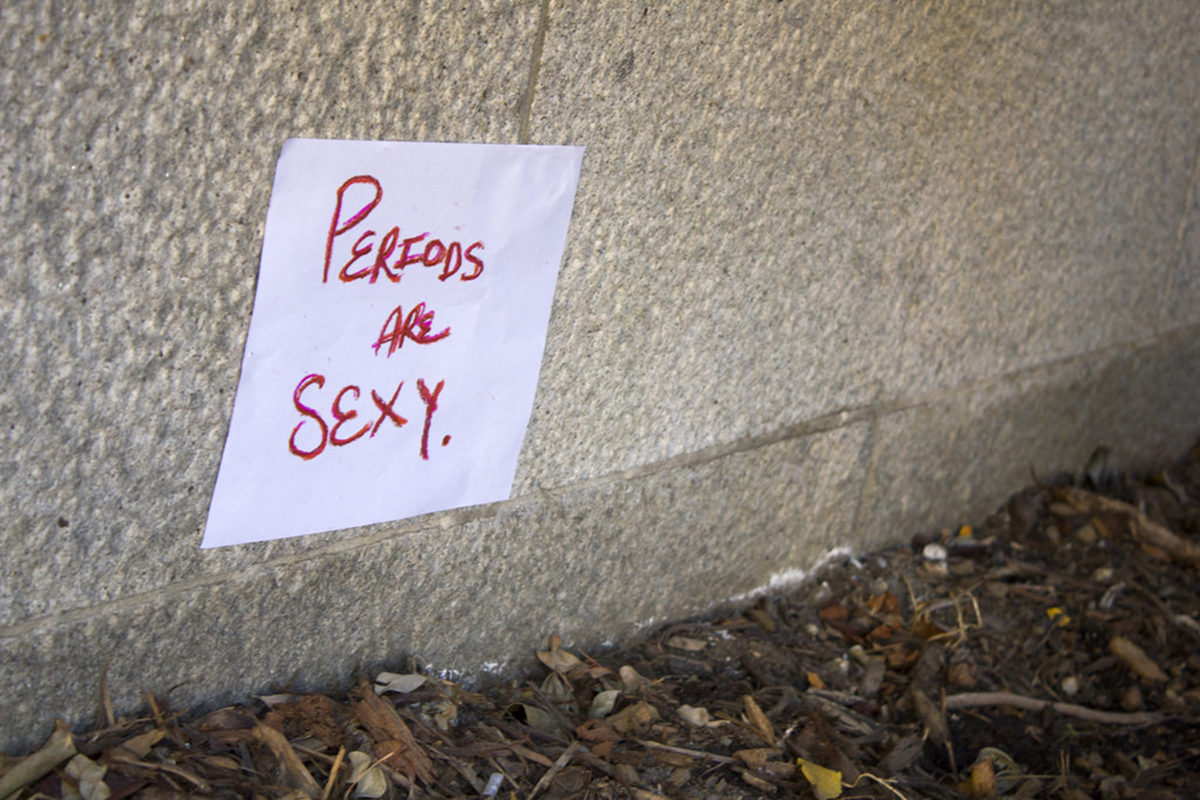Table of Contents
An American man named Harry Finley has collected over 5,000 items that for several years he displayed in the basement of his house in New Carrollton, Maryland, in what he called the Museum of Menstruation. (He is attempting to raise funds for a new building, although over the last 18 years he has not raised enough money to begin.) Among the odder products in the museum are:

- One of the most common menstruation products in the US in the 1920's was potentially deadly. Lysol, the sanitizer for bathrooms and kitchens, was quietly recommended as a douche after sex and menstruation, on the theory that it would double as a contraceptive. Most women in the 1920's had no idea of how to avoid having babies after sex. In the United States, even condoms were illegal in some states until about 1975, and many states banned the Pill until the 1970's. Women don't get pregnant while they are having their periods, anyway, so Lysol was useless as contraceptive. Using Lysol or any other product as a douche after sex when a woman was fertile was counterproductive because it flushes sperm into the cervix. Tragically, some women died of poisoning after Lysol leached into their blood streams.
- Almost as toxic as Lysol were "vaginal cones" sold by the Henry K. Wampole Company in the United States in the 1800's. Made of sodium borate, the same chemical used in a famous detergent called 20-Mule Team Borax, the cones were supposed to prevent the transmission of diseases like gonorrhea during a woman's period. The vaginal cones also contained an additive known as picric acid; in large amounts it is explosive. The product actually increased the risk of transmitting STDs by irritating the vagina and cervix so that blood vessels were directly exposed to germs.
- Reusable home-made pads. In the nineteenth century women often cut chamois cloth (something similar to the cloth advertised on the famous Sham-Wow commercials for a different purpose) to be used and washed again and again. Johnson & Johnson, the pharmaceutical giant, had designed single-use disposable pads as early as 1896, but could not sell them because they could not be advertised.
- Menstrual aprons were aprons worn under a dress instead of over it. They didn't work very well.
- Fax Tampons began making (and advertising) a tampon with no applicator and no string in the 1920's. They quickly found that they had to explain that their product would not interfere with urination, and rumors abounded that using a tampon would break the hymen and thereby "deflower" women who had not yet had sex.
READ Bleeding Outside Of Your Period: Signs You Should Look Out For
- The Kotex sanitary belt, which was used until about 40 years ago, had tabs at each end that were attached to a belt. This was before the advent of self-adhesive pads. Kotex advertised its products with terms such as "fresh," "dainty," and "sanitary," and supported a menstruation expert who offered the opinion that "One must keep menstruation concealed, to present one's carefully constructed front of femininity from becoming damaged by the taint of menstrual pollution."
- By the 1990's, menstruation had become much less of a taboo product. One company even offered a "First Moon Party" kit to celebrate a girl's first period. The kit included a cassette tape of music for the party, an instruction booklet, an audio tape so soccer moms could play instructions on menstruation to their daughters in the car, ribbons, party favors, and invitations.
- In the 1980's, as the new self-adhesive tampons began to dominate the market, some companies began to market "menstrual deodorants." A product called Pristeen became extremely popular in the United States with the slogan "The trickiest deodorant problem a girl has isn't under her pretty little arms." Even at the time, obstetricians and gynecologists recommended using vaginal sprays or deodorants because they can irritate the skin.
- In the 1990's, an American candy maker called Time of the Month, Inc., developed a novelty snack food called Menstrual Crunch for women who had PMS. It is no longer on the market.
- Since 2010, some activists have decried pollution caused by recycling throw-away menstrual products, and have even recommended collecting menstrus in a "menstrual pot" in which water can be added for house plants.
READ Debilitating Menstrual Periods: What Can You Do?
Menstruation is no longer considered unmentionable, or unmanageable. Modern products fortunately are made with a much better understanding of women's bodies and women's health. Menstruation is a natural function that might not always be celebrated, but no longer has to be feared.
- Arielle Pardes. How One Man Ran the World's Only Menstruation Museum from His Basement. Vice. 28 September 2015.
- Photo courtesy of javmorcas: www.flickr.com/photos/javmorcas/8353385370/
- Photo courtesy of quinnanya: www.flickr.com/photos/quinnanya/15259227434/
- Photo courtesy of quinnanya: www.flickr.com/photos/quinnanya/15259227434/


Your thoughts on this